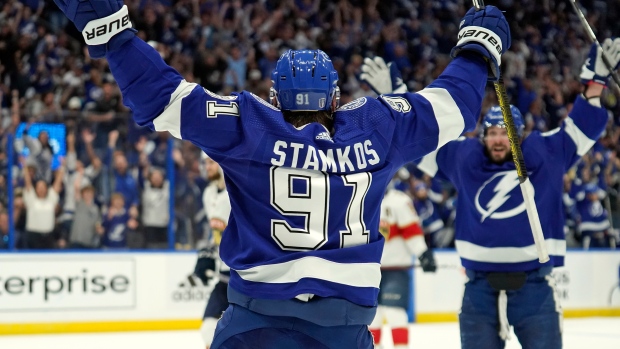May 22, 2022
Elite offences are overwhelming defences in the NHL playoffs
Scoring and expected scoring are up in the postseason, but don’t blame it all on goaltending, Travis Yost writes.
By Travis Yost

All season long, we have been talking about how offensive dominance in the National Hockey League is starting to take centre stage. The great offensive teams are winning. The weak offensive teams are not.
There was some curiosity as to whether this offensive explosion would hold up over the course of the playoffs. Well, it has so far. Going into Sunday’s games, postseason scoring is up 18 per cent year over year and is eight per cent higher than the previous high (2009-10) in the NHL’s modern era (2007 to present).
Here is where the changing NHL landscape gets interesting. Historically, when offence is surging, goaltending is struggling. In fact, that’s precisely what we saw during periods of this past regular season, where scheduling compression and flurries of backup goaltenders surely fanned the goal-scoring flames. The month-over-month data (we will focus on even strength, which is agnostic to special teams volatility) shows surging scoring and weakening stop rates moving in opposite directions:

While expected goals (a function of both shot volumes and the lethality of those shots, weighted by angles, shot types, and distances) were marginally up month over month, real goals were up considerably. With a corresponding plummeting of save percentage, you can reasonably infer goaltenders, as a group, were overwhelmed – particularly at the end of the year.
Why is this interesting? In these playoffs we are seeing a reversal of this trend. I suspect some of it has to do with the subset of goaltenders left in the playoffs – teams with bad goaltending struggle to qualify for the playoffs to begin with and overcoming poor goaltending as a qualified team is another animal altogether. So yes, when you have players like New York’s Igor Shesterkin or Tampa Bay’s Andrei Vasilevskiy in net, you expect better performance.
That is what we have been accustomed to for a long time in the Stanley Cup Playoffs. Not just elite goaltending, but stifling defences slowing games down and mucking things up, so to speak.
This year there is divergence. Look at playoff data, this through the NHL’s modern statistical era, by the same three measures:

Scoring and expected scoring are up, as we know. But goaltending has not moved down in the expected manner. Through Saturday’s games, goaltenders were stopping 92.2 per cent of shots, just marginally down from the 15-year period.
The inference we can draw here is that goaltenders, on a relative basis, are holding up quite well in the playoffs. Whereas we saw some goaltending capitulation over the course of the regular season, the playoffs look a lot like elite NHL offences taking advantage of weaker bluelines. It’s a stunning reversal from a decade-long trend.
If we look at defenders remaining from the last eight teams, we see guys who are having a much tougher time than they did against the weaker offences of the regular season. Absent the Colorado Avalanche, who rolled through an undermanned Nashville Predators team in round one (and who, I should point out, have a bigger challenge this time around), two-thirds of defenders in the playoffs have seen their numbers weaken:

If you were looking for tightening this postseason, you have been disappointed. But this time around, it’s hard to blame the goaltenders. What the data says, and certainly what the video from these games suggests, is that these frenetic offences that swept through the regular season have continued to torture their defensive counterparts.
And though the crop of goaltenders remaining are better equipped to make tough save after tough save, there is no doubt their workload is as high as it has ever been.
As for the coaches who preach the importance of defensive integrity and execution, well, there’s a lot of work ahead.
Data via NHL.com Evolving Hockey, Natural Stat Trick

